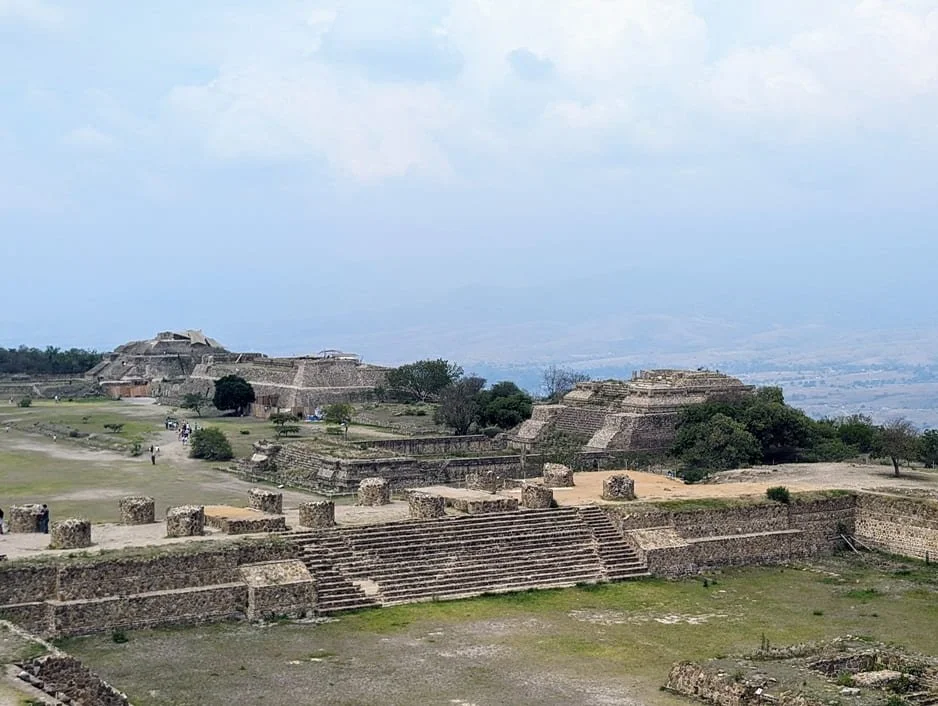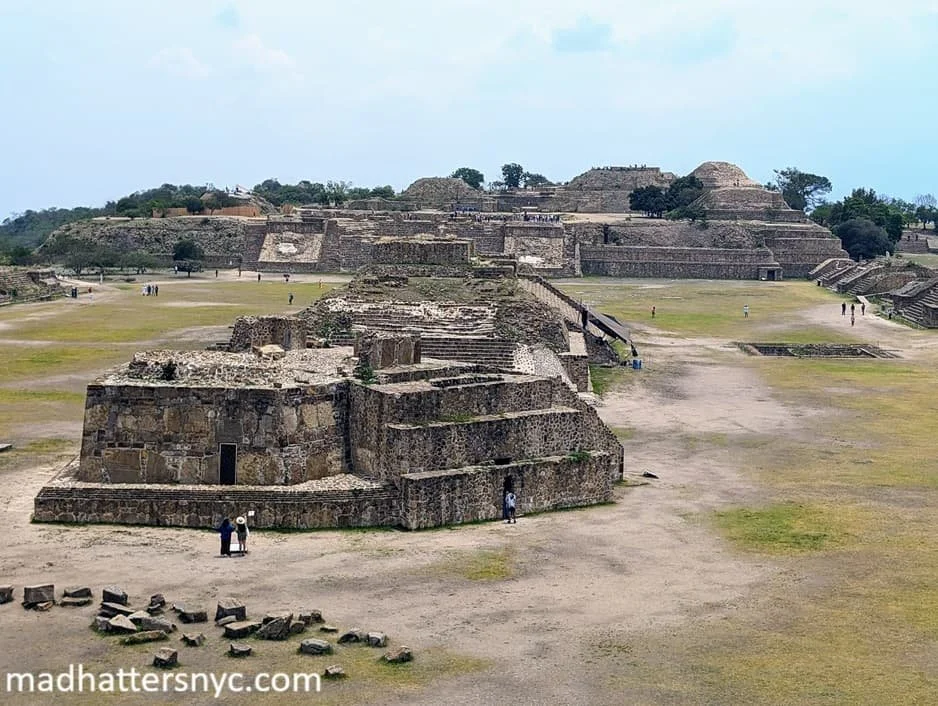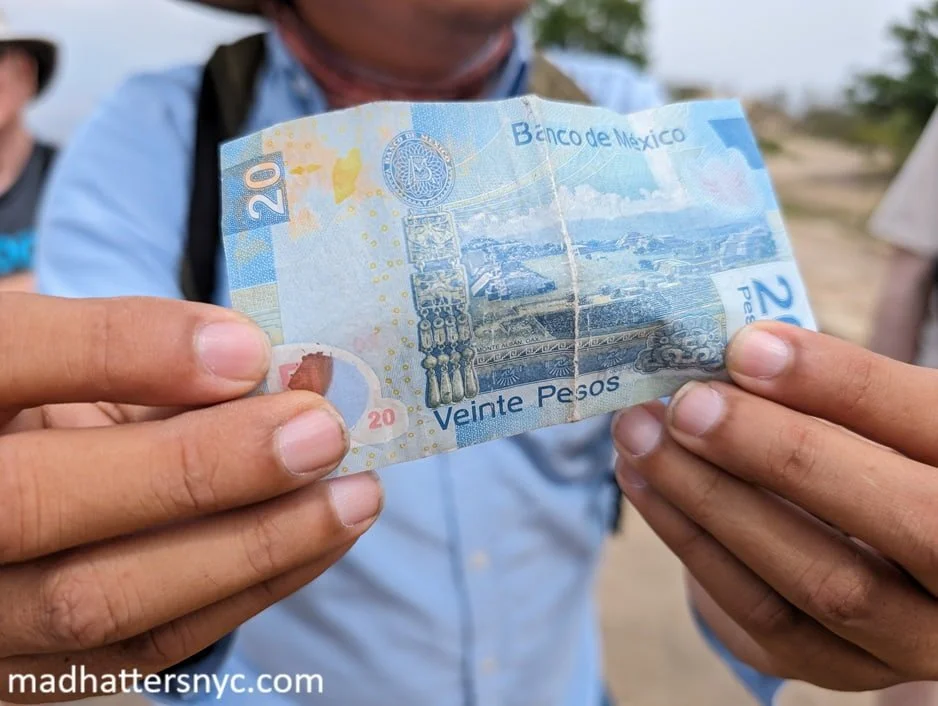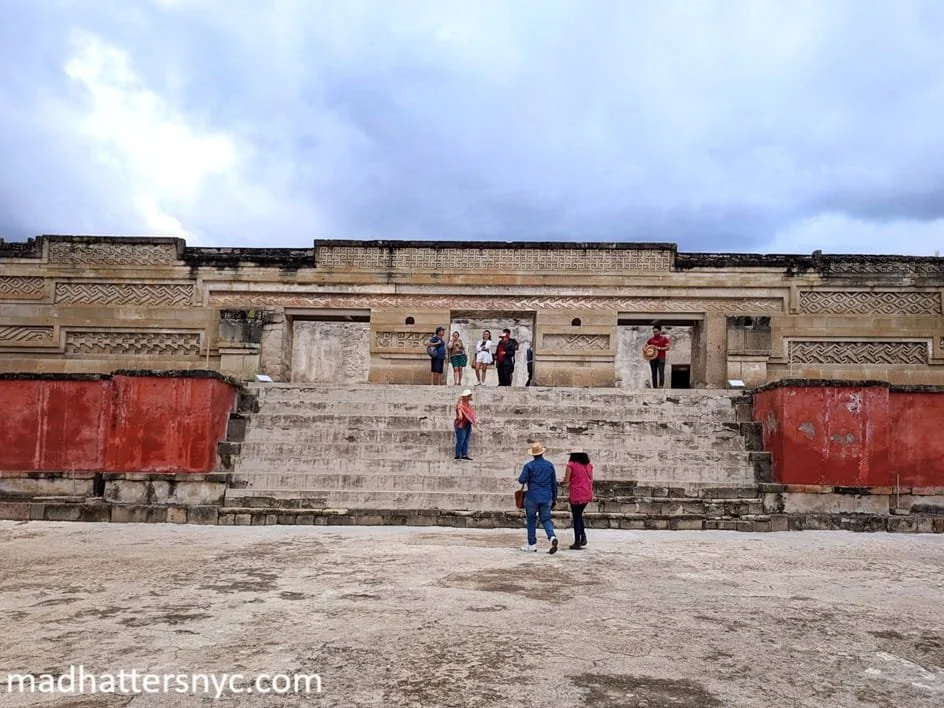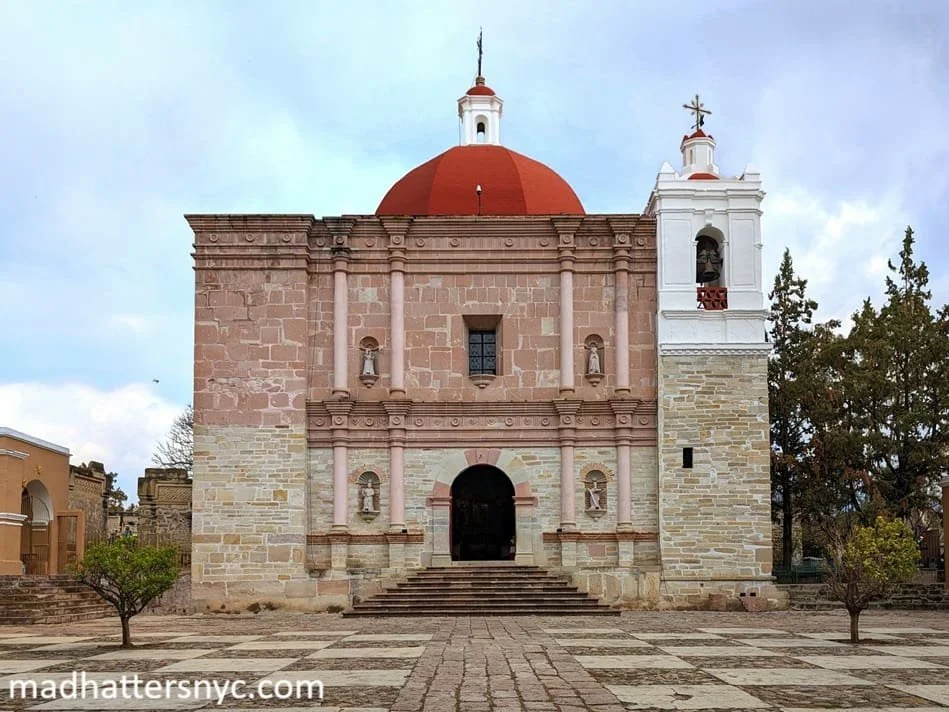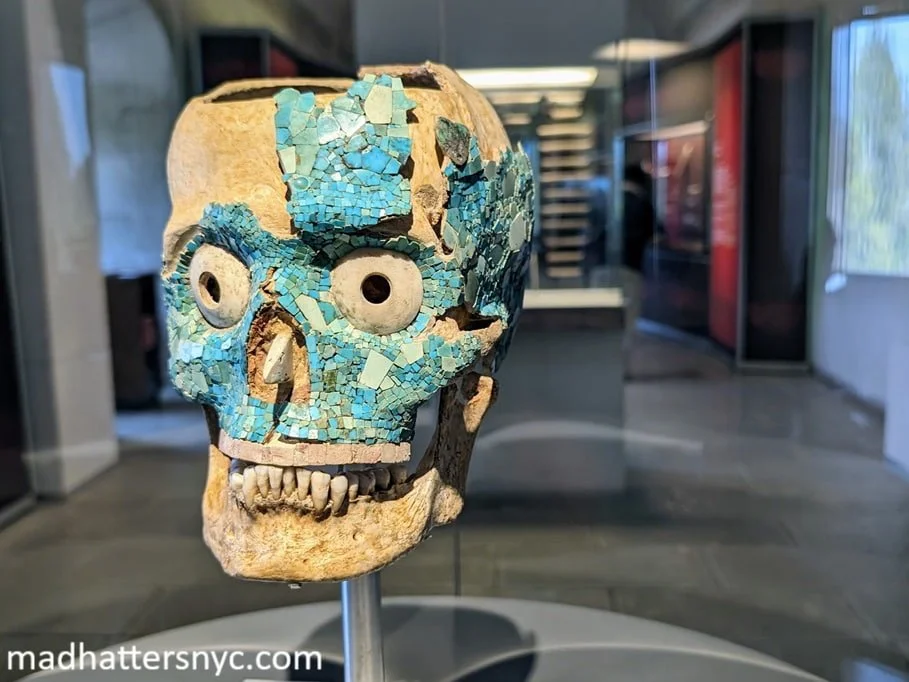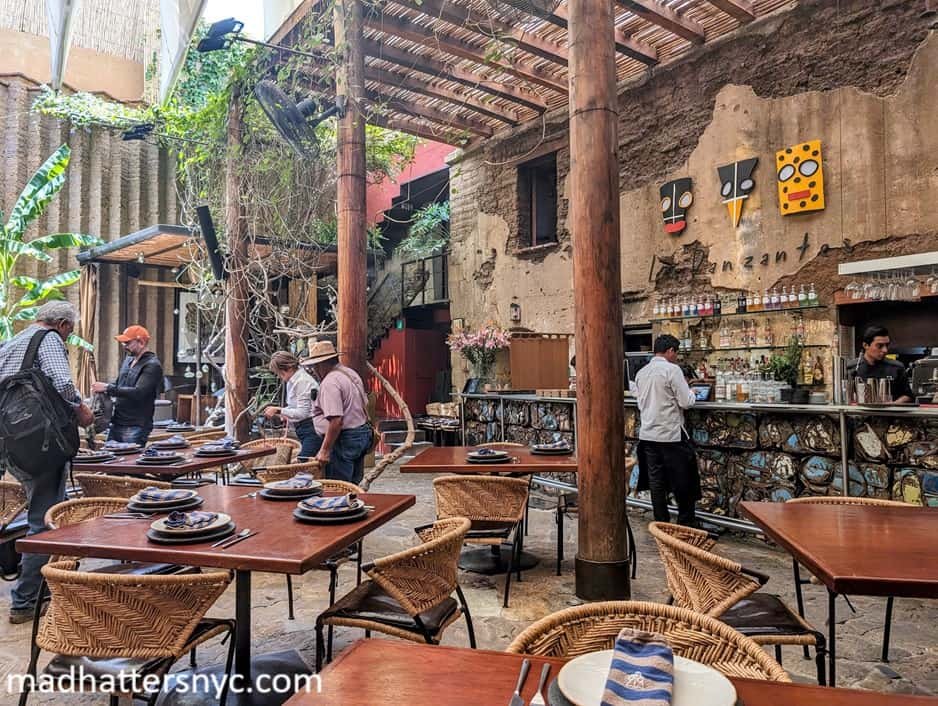Visiting the Ancient Zapotec Wonders Monte Albán and Mitla from Oaxaca
If you’re visiting Mexico's Oaxaca Valley, you have the opportunity to visit two of the most significant remnants of the ancient Zapotec civilization: Monte Albán and Mitla. These archaeological treasures, each with its unique charm and place in history, offer a window into a world that thrived long before European explorers set foot on American soil. I highly recommend visiting both if you can, and here are my tips and takeaways for a successful visit.
Monte Albán
Why is Monte Albán important?
Monte Albán, one of the earliest cities of Mesoamerica, was occupied over a period of 1,500 years by the Olmecs, Zapotecs and Mixtecs. Perched on a flattened hilltop, the city's unique and strategic location provided sweeping views of the surrounding valleys, enabling its inhabitants to monitor their territory and ward off potential threats. Its terraces, canals, and pyramids were literally carved out of the mountain and are some of the finest examples of sacred topography.
At its peak, Monte Albán was a vibrant political, economic, and ceremonial center. It served as the capital of the Zapotec state, governing over a vast region. The city was a hub for trade, religion, and governance, influencing the cultural and political landscapes of the surrounding areas. Monte Albán's influence extended far beyond its immediate vicinity, establishing it as a cornerstone of ancient Mesoamerican civilization. It is considered a rival and contemporary of both Teotihuacan near Mexico City and Tikal in Guatemala.
How long does it take to visit Monte Albán?
If you’re exploring Monte Albán on your own, I would allow 1-2 hours to make your way across the site and take in all the posted information. If you’re participating in a guided tour, your guide will spend 1-1.5 hours pointing out the site’s historical significance, then offer you additional time to explore on your own, if desired. Including round-trip travel, I would plan on budgeting 3-4 hours to thoroughly enjoy the archeological site.
What shouldn’t I miss at Monte Albán?
Los Danzantes at Monte Albán
You will likely approach from the North Platform, and it’s hard to understate the impact of arriving at Monte Albán’s Main Plaza and seeing it for the first time. But as I made my way around the archeological site, there were a few items that stood out. Los Danzantes, which translates to The Dancers, are a series of stone carvings depicting human figures in various poses, which scholars believe represent captives or sacrificial victims. These reliefs provide valuable insights into the social and ritual practices of the Zapotecs, showcasing their artistic and cultural achievements.
View of Building J from the South Platform at Monte Albán
Building J is a unique, arrow-shaped structure believed to have served as an astronomical observatory. Much like their pre-Hispanic contemporaries, the Zapotecs exhibited an advanced knowledge of astronomy. Much like Mundo Perdido at Tikal, you can see how specific structures were used to record equinoxes and the solstices. To appreciate how its axes are completely incongruous to the rest of the structures in the Main Plaza, it’s worth the 40-step climb up the South Plaza (and this is coming from someone with a substantial fear of heights!).
Juego de Pelota at Monte Albán
Monte Albán’s Juego de Pelota, or Ball Court, is also another feature that is shared between different Mesoamerican civilizations, emphasizing how the cultures assimilated with and borrowed from each other. The movement of the ball is believed to have represented the path of the sacred heavenly bodies, and the prize bestowed upon the winner of the game was support and protection by the gods.
Monte Albán is also home to several tombs, including the famous Tomb 7, which was discovered with a wealth of artifacts, including jewelry, pottery, and human remains. Also don’t overlook the many stelae, which are upright stone slabs carved with inscriptions and reliefs depicting rulers, deities, and important events.
How do I get to Monte Albán?
Guided Tour
Image of Monte Albán on the blue 20-pesos note
Many tour operators offer full-day or half-day packages that may include pick-ups and drop-offs, round-trip transportation, entrance fees, guided tours of Monte Albán, and bonus destinations. These packages can be booked online, through travel agencies, or at hotels and hostels in Oaxaca. Guided tours often provide detailed information about the history and significance of the site, enriching the visitor experience.
I chose this route because guides can provide personal insights and local context that you would otherwise miss. In my years of travel, I’ve learned that a good guide can bring a site to life, and is often worth the additional cost. I used Lescas Tours, a family-owned tour operator with an office right on Oaxaca’s Zocalo, and was very pleased with my guide, Miguel, who spoke English fluently and was extremely passionate and affable. The service up to the point of my arrival at Monte Albán was a little shaky, with minimal communication from the office staff and driver, but the tour itself was very informative.
Tourist Shuttle
There isn’t a public bus that will take you directly to Monte Albán, so the next best transportation-only option is the Tourist Shuttle, or Autobuses Turísticos. If you’ve done your own research or you’re interested in exploring at your own pace, this is an affordable way to get to Monte Albán. As of 2024, a round-trip fare was MX$100 (MX$60 one way). The shuttles leave the main location, which is a 10-minute walk from the Zocalo, every hour on the hour from 9:00 am to 1:00 pm, and return shuttles leave every hour on the half-hour from Monte Albán between 12:30 pm to 3:30 pm.
Some guided tour operators also offer a transportation-only service, so feel free to inquire. Prices are usually comparable.
Taxi
There are many taxis all around Centro, and you can ask a driver the cost for both a one-way trip or round trip to Monte Albán. This option is ideal if you prefer a more private and flexible option. If the idea of approaching a taxi driver makes you nervous, you can also contact ADO Taxi Oaxaca via WhatsApp and the service will put you in touch with an available driver. You can request the fare upfront through the app. Another bonus if you’re using WhatsApp is its built-in translation capability, so it helps if you don’t speak Spanish fluently.
Mitla
Why is Mitla important?
Mitla, known as the Place of the Dead, played a crucial role as a religious center for the Zapotec civilization. Unlike Monte Albán, which was primarily a political and administrative hub, Mitla was a focal point for spiritual and ceremonial activities. It is believed to have been a gateway between the world of the living and the afterlife, reflecting its profound religious significance.
Mitla is renowned for its unique architectural style, characterized by intricate mosaic work and geometric patterns adorning its structures. But another important feature that sets it apart from other archeological sites is that approximately 70% of what has been excavated is in its original form, a testament to the immense craftsmanship and skill involved.
How long does it take to visit Mitla?
Mitla is significantly smaller than Monte Albán, so it doesn’t require a large amount of time to explore. You can see all of Mitla in under an hour, but it’s important to note that there isn’t as much signage, and you might get more out of your visit if you sign up for a tour. Also, allow some time to wander around the market located on its grounds, which not only has a variety of goods, but also competitive prices as compared to Oaxaca proper. You might snag yourself a deal! Including round-trip travel, I would plan on budgeting 4-5 hours to thoroughly enjoy the archeological site.
What shouldn’t I miss at Mitla?
Although it consists of several clusters of structures, the most extensively excavated and restored section of Mitla is the Palace of the Columns. Named for the six massive stone columns that used to support the roof of the main hall, the impressive structure consists of a series of interconnected rooms and courtyards. The Throne Room features a large rectangular column and is believed to have been used for important ceremonial purposes.
But within these rooms, the most impressive feature is the intricate stonework. The walls feature geometric mosaics made from finely cut and fitted stones without the use of mortar. These patterns are unique to Mitla and demonstrate the advanced engineering skills of the Zapotecs. The precision and complexity of these designs set Mitla apart from other Mesoamerican sites.
Most tours won’t include a stop at the church, but I thought it was important from a historical context. In order to eliminate the power and influence of the indigenous people and enforce western civilization and religion, the Spanish dismantled the structures at Mitla and reused their materials to build the Catholic church. The Church of San Pablo was constructed over a pre-existing Zapotec structure, and recent advances in technology have revealed several tunnels buried beneath the church.
How do I get to Mitla?
Mitla is located approximately 35 miles southeast of Oaxaca, and the trip from the Zocalo takes a little over an hour by car. Though the transportation options are largely similar to those available for Monte Albán, there are some variances to navigate.
Guided Tour
Because Mitla is a smaller site and is located farther away, many guided tour options from Oaxaca bundle it with additional attractions. My half-day tour included stops at the Tule Tree and Teotitlán del Valle. Another full-day tour option continues from Mitla to Hierve el Agua. While I enjoyed the other stops, Mitla was the highlight of my outing, and I would’ve been fine with a trip to Mitla alone. So, consider your guided tour options carefully if you decide to go this route.
Public bus or colectivo
The most budget-friendly way to reach Mitla is by taking a public bus from Oaxaca. Buses to Mitla typically depart from the Oaxaca Bus Station in Central de Abastos. Buses run frequently throughout the day, generally every 30 minutes to an hour. It’s a busy area and can be a little rough, so I wouldn’t recommend it for female solo travelers.
Another budget transportation option is the colectivo, whose departure point is located just by the baseball stadium. The shared transportation service requires a van to fill up before leaving, which may take a while depending on the day and time, which works best if you’re on a flexible schedule. There will usually be colectivos in the Mitla parking lot heading back to Oaxaca as well.
Taxi
If you plan on taking a taxi to Mitla, I would recommend negotiating a round-trip rate where the driver waits for you, simply because there aren’t many taxis waiting at Mitla to take you back to Oaxaca. You can approach a taxi driver directly to inquire, or contact ADO Taxi Oaxaca via WhatsApp to put you in touch with an available driver. Negotiate the fare upfront through the app and take advantage of its built-in translation capability if you don’t speak Spanish fluently.
Helpful tips to enhance your experience
Visit the Museum of Cultures at Templo de Santo Domingo de Guzmán
When you’re setting up your Oaxaca itinerary, I found it helpful to visit the Museum of Cultures at the Templo de Santo Domingo de Guzmán prior to my Monte Albán excursion. Housed in a beautiful Baroque former monastery, the museum has an extensive collection of artifacts that span the rich and diverse history of the region, from pre-Hispanic times through the colonial period and into the modern era. But one of its most significant exhibits is the treasure from Tomb 7 of Monte Albán, discovered by archaeologist Alfonso Caso in 1932. This includes gold jewelry, jade masks, and other precious items, providing insight into the wealth and artistry of the Zapotecs. It really sets the stage for your Monte Albán visit.
Enjoy a meal at Los Danzantes in Oaxaca
No visit to Oaxaca is complete without indulging in the rich local cuisine. There is a revived appreciation for the indigenous cultures and their history within Mexico, and Oaxaca’s culinary scene is one of the best ways to see them celebrated. Los Danzantes, in particular, doesn’t just share a name with one of Monte Albán’s most famous features, but also strives to attain one of the Zapotec culture’s most important values: sustainability. The eatery reinterprets traditional flavors in inventive ways, and does so in an environmentally responsible way, earning it not just a Michelin Star for quality, but also a Green Star for its environmental efforts.
Consider other nearby attractions
If you’d like to delve deeper into archeological sites, consider also visiting Yagul and Dainzu. Yagul features ancient structures, tombs, and a fortress with panoramic views of the valley. It provides a different perspective on the pre-Hispanic civilizations that inhabited the region. Dainzu is an often-overlooked site that features unique carvings and architectural remains.
If you’d like a different perspective on local cultures, the craft villages around Oaxaca could be a fun alternative. Teotitlán del Valle is known for its exquisite handwoven rugs and textiles, many of which feature Zapotec patterns. San Bartolo Coyotepec is famous for its black pottery, and San Martín Tilcajete is renowned for its brightly colored alebrijes (wooden carvings of fantastical creatures). You can watch artisans create these different crafts and learn about the cultural significance behind them.
Explore Oaxaca’s vibrant street art
Even though the Zapotecs and Mixtecs were the largest ancient civilizations in the region, scholars estimate that Oaxaca was home to 16 separate cultures, each with its own language, customs and traditions. Many of its stories and beliefs are depicted in the vibrant murals and street art around the city. Enjoy a stroll through Oaxaca’s Xochimilco and Jalatlaco neighborhoods to see how culture and history create a colorful backdrop for the city.
Take a daytime flight out of Oaxaca
If you’re flying out of Oaxaca, try to schedule your flight for a daytime hour because the sight of Monte Albán from the sky is a wholly unique experience! The idea that an ancient civilization, with just manpower and ingenuity, leveled a hilltop and built an entire city above it truly comes to life from that viewpoint.
Conclusion
Together, Monte Albán and Mitla encapsulate the depth and diversity of Oaxaca's past, making them indispensable stops for any traveler. Exploring these ancient cities not only enriches one's understanding of Mesoamerican history but also deepens appreciation for the enduring legacy of Oaxaca's indigenous cultures. Whether you are an archaeology enthusiast, a history buff, or simply a curious traveler, Monte Albán and Mitla offer unforgettable experiences that highlight the extraordinary achievements of the Zapotec civilization.

